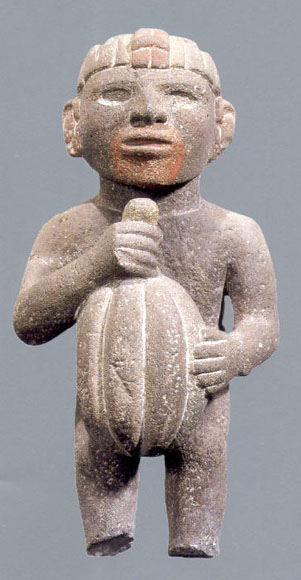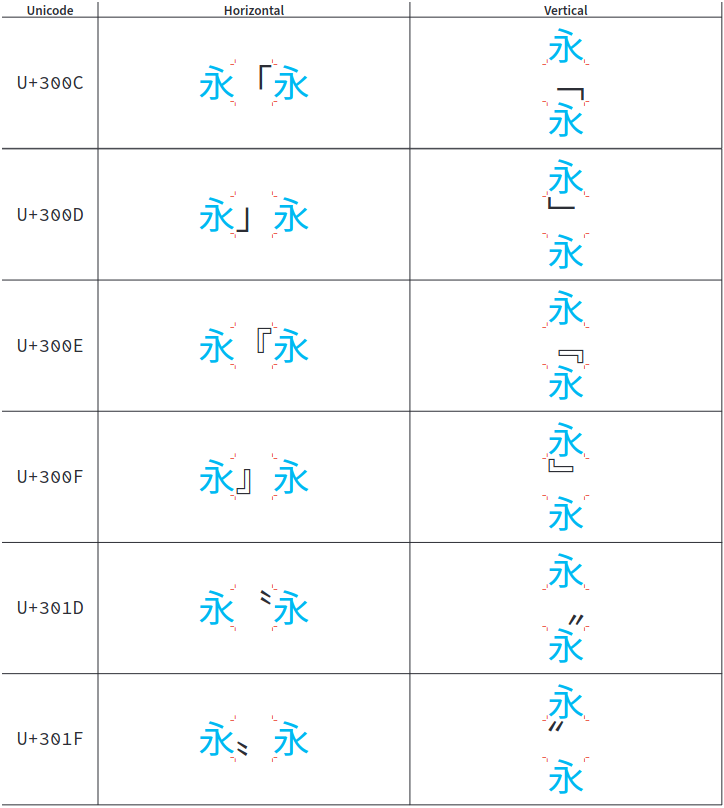|
Ditto Mark
The ditto mark is a shorthand sign, used mostly in hand-written text, indicating that the words or figures above it are to be repeated. The mark is made using "a pair of apostrophes"; "a pair of marks used underneath a word"; the symbol (quotation mark); but the Cambridge Dictionary of Business English on the same page uses the CJK ditto mark or the symbol (right double quotation mark). In the following example, the second line reads "Blue pens, box of twenty". Black pens, box of twenty ... $2.10 Blue " " " " ... $2.35 History Early evidence of ditto marks can be seen on a cuneiform tablet of the Neo-Assyrian period (934–608 BCE) where two vertical marks are used in a table of synonyms to repeat text. The word ''ditto'' comes from the Tuscan language, where it is the past participle of the verb (to say), with the meaning of "said", as in the locution "the said story". The first recorded use of ''ditto'' with this meaning in English occurs in 1625. ... [...More Info...] [...Related Items...] OR: [Wikipedia] [Google] [Baidu] |
CJK Characters
In internationalization, CJK characters is a collective term for graphemes used in the Chinese, Japanese, and Korean writing systems, which each include Chinese characters. It can also go by CJKV to include Chữ Nôm, the Chinese-origin logographic script formerly used for the Vietnamese language, or CJKVZ to also include Sawndip, used to write the Zhuang languages. Character repertoire Standard Mandarin Chinese and Standard Cantonese are written almost exclusively in Chinese characters. Over 3,000 characters are required for general literacy, with up to 40,000 characters for reasonably complete coverage. Japanese uses fewer characters—general literacy in Japanese can be expected with 2,136 characters. The use of Chinese characters in Korea is increasingly rare, although idiosyncratic use of Chinese characters in proper names requires knowledge (and therefore availability) of many more characters. Even today, however, some South Korean students learn 1,800 character ... [...More Info...] [...Related Items...] OR: [Wikipedia] [Google] [Baidu] |
Office Québécois De La Langue Française
The (, OQLF; ) is an agency of the Quebec provincial government charged with ensuring legislative requirements with respect to the right to use French are respected. Established on 24 March 1961 by the Liberal government of Jean Lesage, the OQLF was attached to the Ministry of Culture and Communications. Its initial mission, defined in its report of 1 April 1964, was "to align with international French, promote good Canadianisms and fight Anglicisms, ... work on the normalization of the language in Quebec and support State intervention to carry out a global language policy that would consider notably the importance of socio-economic motivations in making French the priority language in Quebec".24 mars 1961 - Création de l'Office de la langue française , in ' ... [...More Info...] [...Related Items...] OR: [Wikipedia] [Google] [Baidu] |
Cocoa Bean
The cocoa bean, also known as cocoa () or cacao (), is the dried and fully fermented seed of ''Theobroma cacao'', the cacao tree, from which cocoa solids (a mixture of nonfat substances) and cocoa butter (the fat) can be extracted. Cacao trees are native to the Amazon rainforest. They are the basis of chocolate and Mesoamerican foods including tejate, an indigenous Mexican drink. The cacao tree was first domesticated at least 5,300 years ago by the Mayo-Chinchipe culture in South America before it was introduced in Mesoamerica. Cacao was consumed by pre-Hispanic cultures in spiritual ceremonies, and its beans were a common currency in Mesoamerica. The cacao tree grows in a limited geographical zone; today, West Africa produces nearly 81% of the world's crop. The three main varieties of cocoa plants are Forastero, Criollo, and Trinitario, with Forastero being the most widely used. In 2024, global cocoa bean production reached 5.8 million tonnes, with Ivory Coast leading a ... [...More Info...] [...Related Items...] OR: [Wikipedia] [Google] [Baidu] |
Diacritic
A diacritic (also diacritical mark, diacritical point, diacritical sign, or accent) is a glyph added to a letter or to a basic glyph. The term derives from the Ancient Greek (, "distinguishing"), from (, "to distinguish"). The word ''diacritic'' is a noun, though it is sometimes used in an attributive sense, whereas ''diacritical'' is only an adjective. Some diacritics, such as the acute , grave , and circumflex (all shown above an 'o'), are often called ''accents''. Diacritics may appear above or below a letter or in some other position such as within the letter or between two letters. The main use of diacritics in Latin script is to change the sound-values of the letters to which they are added. Historically, English has used the diaeresis diacritic to indicate the correct pronunciation of ambiguous words, such as "coöperate", without which the letter sequence could be misinterpreted to be pronounced . Other examples are the acute and grave accents, which can indica ... [...More Info...] [...Related Items...] OR: [Wikipedia] [Google] [Baidu] |
Maya Script
Maya script, also known as Maya glyphs, is historically the native writing system of the Maya civilization of Mesoamerica and is the only Mesoamerican writing system that has been substantially deciphered. The earliest inscriptions found which are identifiably Maya date to the 3rd century BCE in San Bartolo, Guatemala. Maya writing was in continuous use throughout Mesoamerica until the Spanish conquest of the Maya in the 16th and 17th centuries. Though modern Mayan languages are almost entirely written using the Latin alphabet rather than Maya script, there have been recent developments encouraging a revival of the Maya glyph system. Maya writing used logograms complemented with a set of syllabic glyphs, somewhat similar in function to modern Japanese writing. Maya writing was called "hieroglyphics" or hieroglyphs by early European explorers of the 18th and 19th centuries who found its general appearance reminiscent of Egyptian hieroglyphs, although the two systems are unre ... [...More Info...] [...Related Items...] OR: [Wikipedia] [Google] [Baidu] |
Iteration Mark
Iteration marks are characters or punctuation marks that represent a duplicated character or word. Chinese In Chinese, or (usually appearing as , equivalent to the modern ideograph ) or is used in casual writing to represent a doubled character. However, it is not used in formal writing anymore, and it rarely appeared in printed matter. In a tabulated table or list, vertical repetition can be represented by a ditto mark (). History Iteration marks have been occasionally used for more than two thousand years in China. The example image shows an inscription in bronze script, a variety of formal writing dating to the Zhou dynasty, that ends with , where the small ("two") is used as iteration marks in the phrase ("descendants to use and to treasure"). Malayo-Polynesian languages In Filipino, Indonesian, and Malay, words that are repeated can be shortened with the use of numeral "2". For example, the Malay ("words", from single ) can be shortened to , and ("to walk arou ... [...More Info...] [...Related Items...] OR: [Wikipedia] [Google] [Baidu] |
Seal Script
Seal script or sigillary script () is a Chinese script styles, style of writing Chinese characters that was common throughout the latter half of the 1st millennium BC. It evolved organically out of bronze script during the Zhou dynasty (1046–256 BC). The variant of seal script used in the state of Qin eventually became comparatively standardized, and was adopted as the formal script across all of China during the Qin dynasty (221–206 BC). It was still widely used for decorative engraving and seal (East Asia), seals during the Han dynasty (202 BC220 AD). The literal translation given above was coined during the Han dynasty, and reflects the role of the script being reduced to ceremonial inscriptions. Types The term ''seal script'' may refer to several distinct varieties, including the large seal script and the small seal script. Without qualification, ''seal script'' usually refers to the small seal script—that is, the lineage which evolved with ... [...More Info...] [...Related Items...] OR: [Wikipedia] [Google] [Baidu] |
Zhou Dynasty
The Zhou dynasty ( ) was a royal dynasty of China that existed for 789 years from until 256 BC, the longest span of any dynasty in Chinese history. During the Western Zhou period (771 BC), the royal house, surnamed Ji, had military control over territories centered on the Wei River valley and North China Plain. Even as Zhou suzerainty became increasingly ceremonial over the following Eastern Zhou period (771–256 BC), the political system created by the Zhou royal house survived in some form for several additional centuries. A date of 1046 BC for the Zhou's establishment is supported by the Xia–Shang–Zhou Chronology Project and David Pankenier, but David Nivison and Edward L. Shaughnessy date the establishment to 1045 BC. The latter Eastern Zhou period is itself roughly subdivided into two parts. During the Spring and Autumn period (), power became increasingly decentralized as the authority of the royal house diminished. The Warring States ... [...More Info...] [...Related Items...] OR: [Wikipedia] [Google] [Baidu] |
Bronze Script
Chinese bronze inscriptions, also referred to as bronze script or bronzeware script, comprise Chinese writing made in several styles on ritual bronzes mainly during the Late Shang dynasty () and Western Zhou dynasty (771 BC). Types of bronzes include ''zhong'' bells and '' ding'' tripodal cauldrons. Early inscriptions were almost always made with a stylus into a clay mold, from which the bronze itself was then cast. Additional inscriptions were often later engraved onto bronzes after casting. The bronze inscriptions are one of the earliest scripts in the Chinese family of scripts, preceded by the oracle bone script. Terminology For the early Western Zhou to early Warring States period, the bulk of writing which has been unearthed has been in the form of bronze inscriptions. As a result, it is common to refer to the variety of scripts of this period as "bronze script", even though there is no single such script. The term usually includes bronze inscriptions of the preced ... [...More Info...] [...Related Items...] OR: [Wikipedia] [Google] [Baidu] |
CJK Symbols And Punctuation
CJK Symbols and Punctuation is a Unicode block containing symbols and punctuation used for writing the Chinese, Japanese and Korean languages. It also contains one Chinese character. Block The block has variation sequences defined for East Asian punctuation positional variants. They use (VS01) and (VS02): Orientation Quotation marks and other punctuation have expected differences in behaviour in vertical and horizontal text. The quotation marks 「...」, 『...』 and 〝...〟 rotate 90 degrees, as follows: See also General Punctuation, for variation selectors and CJK behaviour of the Latin quotation marks ‘...’ and “...”. Chinese character The CJK Symbols and Punctuation block contains one Chinese character: . Although it is not covered under "Unified Ideographs", it is treated as a CJK character for all other intents and purposes. Emoji The CJK Symbols and Punctuation block contains two emoji: U+3030 and U+303D. The block has four standardized var ... [...More Info...] [...Related Items...] OR: [Wikipedia] [Google] [Baidu] |





